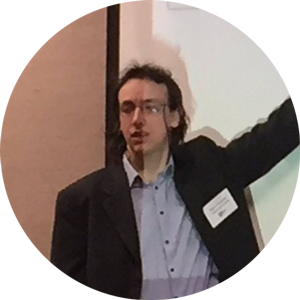Art of Simulation, Latest News
Value Stream Mapping versus Process Mapping
 Naoum Tsioptsias / Apr 12, 2022
Naoum Tsioptsias / Apr 12, 2022
Companies looking to transform their business processes are most likely to turn to mapping the landscape to gather information as a first step. Mapping tools will help to observe a process in use and these can then be used to look at ways in which the processes can be improved.
It sounds relatively straightforward, but there has been some confusion over the terms being used. There are two approaches – value stream mapping and process mapping – that can be taken and, while they both fit into companies’ attempts to transform their operations and streamline their processes, they come from different angles and serve different purposes.
While both tools can be used for mapping, when it comes to their applications the resemblance ends there. Process mapping, as the name implies, examines individual processes and ways they can be made more efficient, while value stream mapping takes a more holistic view, looking at the wider business picture.
Perhaps the simplest way of looking at it is that process mapping is a tactical weapon in the drive towards business transformation, while value stream mapping is a more strategic tool. They will be used in different situations too.
Value Stream Mapping
Value stream mapping really comes into its own in an area where there’s a requirement for a range of processes to be deployed to bring about some sort of end product. Typically this means manufacturing, but the same techniques are used in many situations. Take a hospital, for example, where it’s possible to examine all the steps from a patient’s initial admission through the journey to their discharge.
But the more typical example is manufacturing and VSM is used to examine the flow of materials that are used to bring about an end product: in manufacturing that means goods to a customer, in healthcare, it means the movement of the patient through a clinic.
When used properly, VSM can identify waste, either in the materials being used or in the processes being deployed. To be used effectively, every single step has to be examined in detail so any problems can be quickly identified.
What VSM should show is a cycle time for each individual process, but it will also show the wait time between every function. This will help identify any wasteful areas and find out what can be streamlined.
What is particularly important about VSM is that it’s part of the wider business process – it will provide a holistic viewpoint.
Process Mapping
Process mapping is more granular. It will look in detail at each step in a particular process and not the function as a whole. By going down this route, you will be able to hone in on every individual step and see where that function could be improved.
For example, process mapping will closely examine a factory production line and look at how it’s operating and where it can be improved, while value stream mapping will look at the production line as just one part of the wider business issues.
Because VSM provides a more holistic, wider-angle view of things, there will be a need for a buy-in from all parts of the business, with input from manufacturing, purchasing, logistics and finance, as well as IT. Or, if you’re considering it from a healthcare point of view, then it’s something where clinicians and management need to work together.
The Simul8 approach
Simul8 takes a different approach to value stream management. The company adds simulation to the mix, providing a real life appraisal of the issues by generating evidence of how things will play out under different scenarios. For example, rather than estimating how long work will spend in inventory, Simul8 will make accurate predictions, taking into account all of the factors that would apply in the real world. This could include delivery delays or human error, for example, and will create a far clearer picture.
In order to build an accurate VSM, four objects are used: supplier (where products enter the value stream); inventory (where they wait to be processed); the process itself and, finally the customer, when work is delivered. At all of those stages, simulation is used to build a realistic picture of how the process will be carried out in the real world.
Simul8 also works with process maps in a similar way, providing a more accurate picture of how those processes are impacted by real world factors.
These are two distinct methodologies with different ways of operating and different outcomes. It’s important to be clear as to what outcome is desired. Are you looking at one particular stage in a bigger picture or are you looking at a wider landscape? In either case, simulation is the next level that enables process improvement approaches to be built on accurate foundations.
Learn more about Simul8
Find out more about the benefits of Simul8 simulation software by getting in touch with our team today